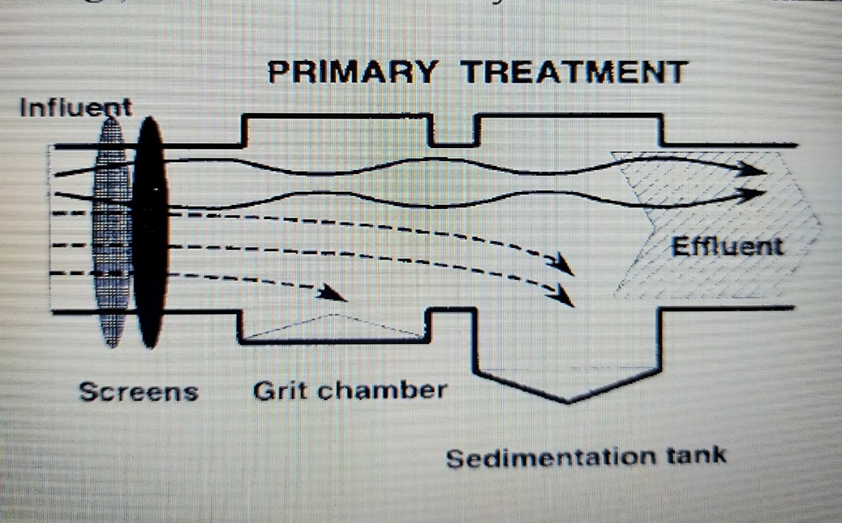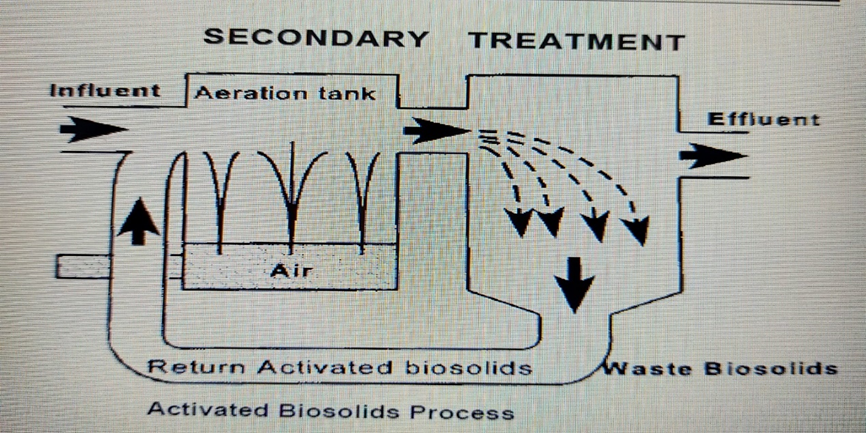How Does The Wastewater Treatment Work?

One of the common forms of pollution control is wastewater treatment. Now, several cities have sewage systems, pump stations, wastewater treatment plants (WWTP) and sewers. These systems collect wastewater from residential areas, businesses, and industries that will send it to the WWTP for processing. Most of these wastewater treatment plants are built for the purpose of cleaning wastewater for disposal into rivers / sea or for reuse.
Many years ago when the waste was dumped into waterways, a natural purification process started. First, the clean water in the river dilutes the waste to a lower concentration. Then, bacterias and other small organisms in the water consume waste and organic matter converting them into new bacterial cells, carbon dioxide and other products. Today, the higher population and the larger volume of domestic and industrial wastewater require humans to give a helping hand, one of the metods is through wastewater treatment.
The basic function of wastewater treatment is to accelerate the natural process by which water is purified. There are two basic stages in waste treatment, namely primary and secondary treatment.

In the primary stage, the solid / sludge is allowed to settle and/or removed from the wastewater. The secondary stage uses biological processes to further purify wastewater. Sometimes these stages are combined into one operation.
Primary Treatment
When wastewater enters the treatment plant, this treatment removes large floating objects such as cloth and wood that can clog pipes or damage equipment. After the sewage is filtered, the waste enters the grit chamber, where sand/grit and small stones settle to the bottom. The grit chamber is very important in sewage treatment with a combined sewer system where sand and gravel can enter the sewer together with rainwater.
After the filtering is complete and the sand has been removed, the wastewater still contains organic and inorganic materials along with sludge and others. This sludge / solid is a small particle that can be removed / separated from the waste in the sedimentation tank (sedimentation tank). As the velocity of flow through one of these tanks decreases, the suspended solids will gradually sink to the bottom. Here, they form a solid mass called the raw primary biosolid formerly sludge. Biosolids are usually removed from the tank with a pump so that it can be further processed to be used as fertilizer or disposed of to a final disposal site or burned.
Over the years, primary treatment alone has not been able to meet the demands of many communities for higher quality water. To fulfill this, cities and industries usually use advanced secondary treatment, to remove nutrients and other contaminants.
Secondary treatment

The secondary processing stage can remove 85 percent of the organic material in the waste by utilizing the bacteria in it. The processing technique used in secondary treatment is trickling filter or activated sludge method. After the waste leaves the sedimentation tank at the Primary stage, it flows or is pumped into one of these processes (trickling filter / activated sludge). However, the trickling filter process was abandoned due to the slow process due to frequent clogging of plastics and small particles in the filter. People then turned to activated sludge systems. The activated sludge process accelerates the work of bacteria by bringing air and sludge laden with bacteria into the waste. After the waste leaves the tank in the primary stage, this waste is then pumped to the aeration tank.
Where it will later mix with air and sludge which is full of bacteria for several hours. Up until this moment, bacteria breaks down organic matter into harmless byproducts. The sludge, now activated with billions of additional bacteria and other organisms can be reused by returning it to the aeration tank to mix with the new air and waste. From the aeration tank, partially treated wastewater flows to another sedimentation tank to remove excess bacteria.
In complete secondary treatment, the waste from the sedimentation tank is usually disinfected with chlorine before being discharged into receiving water. chlorine is put into water to kill phatogenic bacteria and reduce odors. If done properly, chlorination will kill more than 99 percent of the harmful bacteria in wastewater.
New pollution problems have added additional burdens to wastewater treatment systems. Today's pollutants, such as heavy metals, chemical compounds, and toxic substances are more difficult to remove from water. Increasing demand for water supply will only worsen the problem. This increasing need to reuse treated water also requires better wastewater treatment. This challenge is met through better methods of removing pollutants in sewage treatment, or through preventing pollution at the source.
To return more water that would later be used for lakes and rivers, new methods that are useful for removing pollutants are being developed. By advancing the waste treatment techniques that are used or are being developed, everything depends on the ability of biological treatment to remove mitogens and phosphorus to engineering Physical-chemical separation. Such as filtration, carbon adsorption, distillation and osmosis reverses. This wastewater treatment process, either alone or in combination, can achieve almost any level of pollution reduction desired, wastes that are purified by this treatment, can be used for industrial, agricultural or recreational purposes, or even drinking water supplies.
-
KNOWING THE SEDIMENTATION OF BUILDING
In a Wastewater Treatment Plant (WWTP) system, a sedimentation or sedimentation structure is generally...READ MORE -
World Water Day, The Importance of Maintaining Clean Water for the Future
World Water Day is a celebration that is held every year to make people around the world aware of the...READ MORE -
Invent HYPERCLASSIC« Mixing and Aeration System
The INVENT HYPERCLASSIC« -Mixing and Aeration System is a fluid mechanically optimized mechanical aeration...READ MORE


